We love our southern New England cruising grounds with such a variety of ports that are within an easy distance, but lately we have yearned to throw new experiences or places in the mix. At Don’s suggestion we went to New Bedford next. Don and Cindy had been back there in the 1990s and we have never stopped in New Bedford.
We left Newport on Saturday, August 9 for the 5 hour ride.
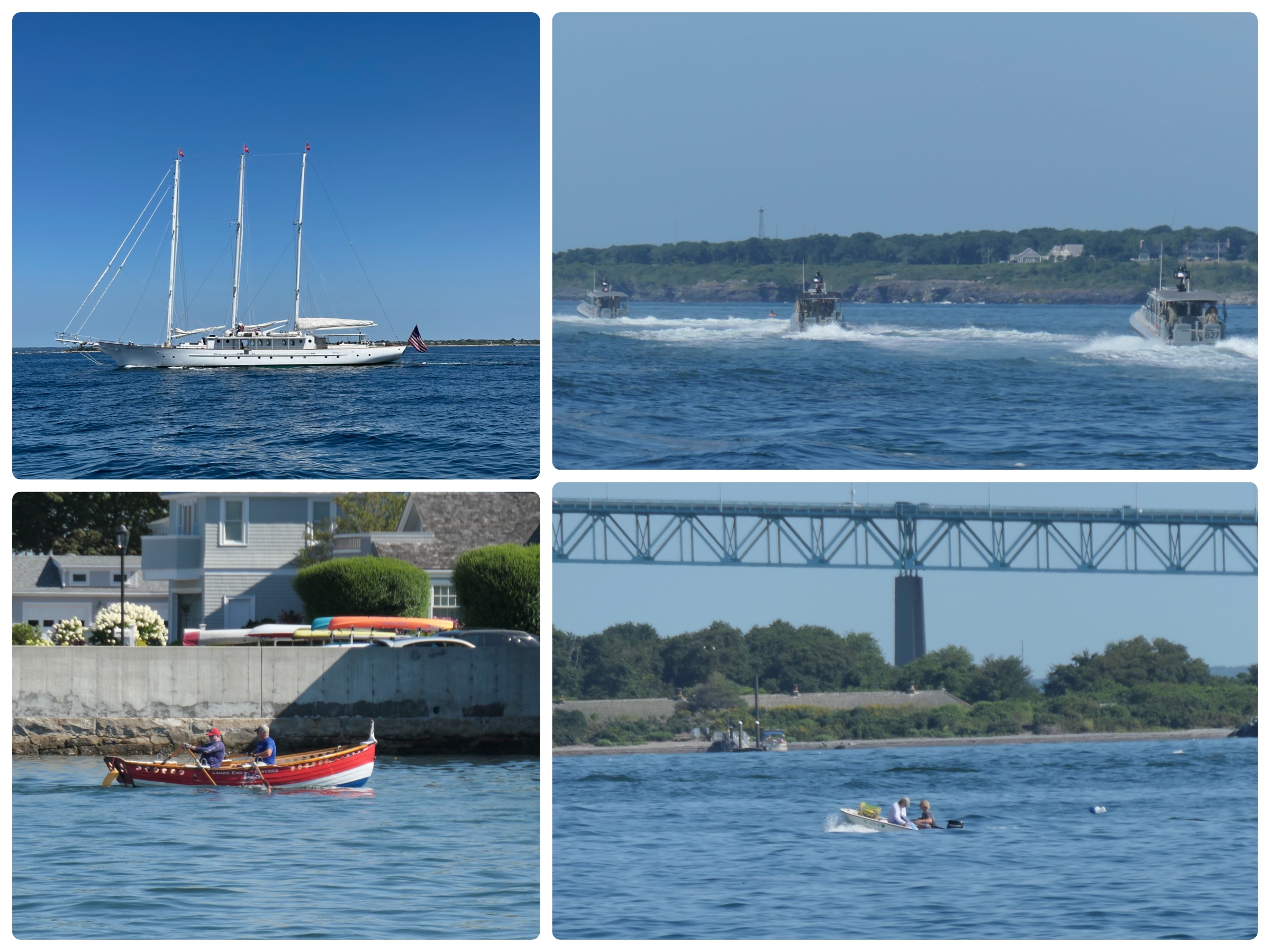
Arabella the 157 foot charter sailboat, three Navy boats speeding out to Narragansett Bay, two guys in a colorful rowboat, and a tiny Boston Whaler crossing the bay.
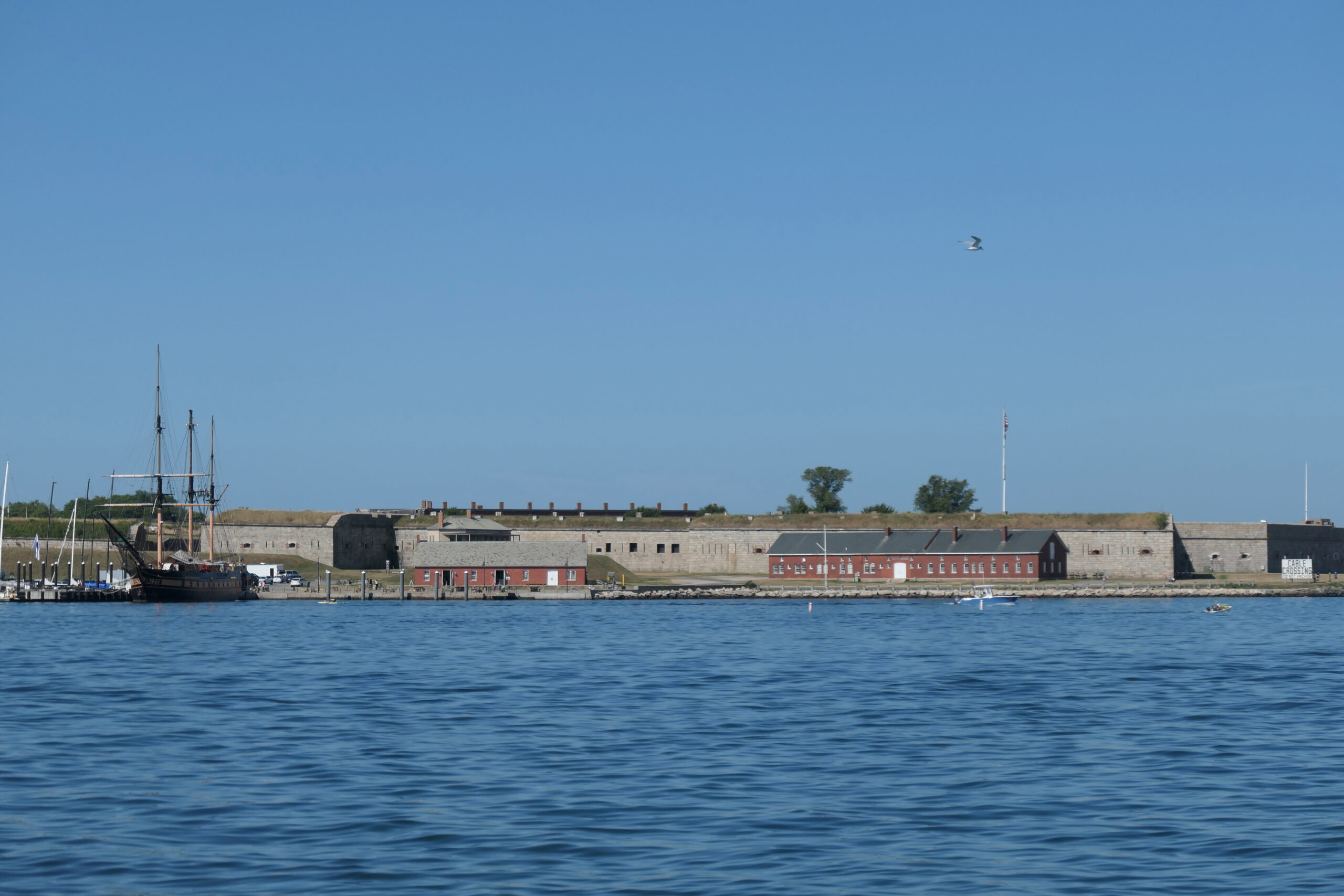
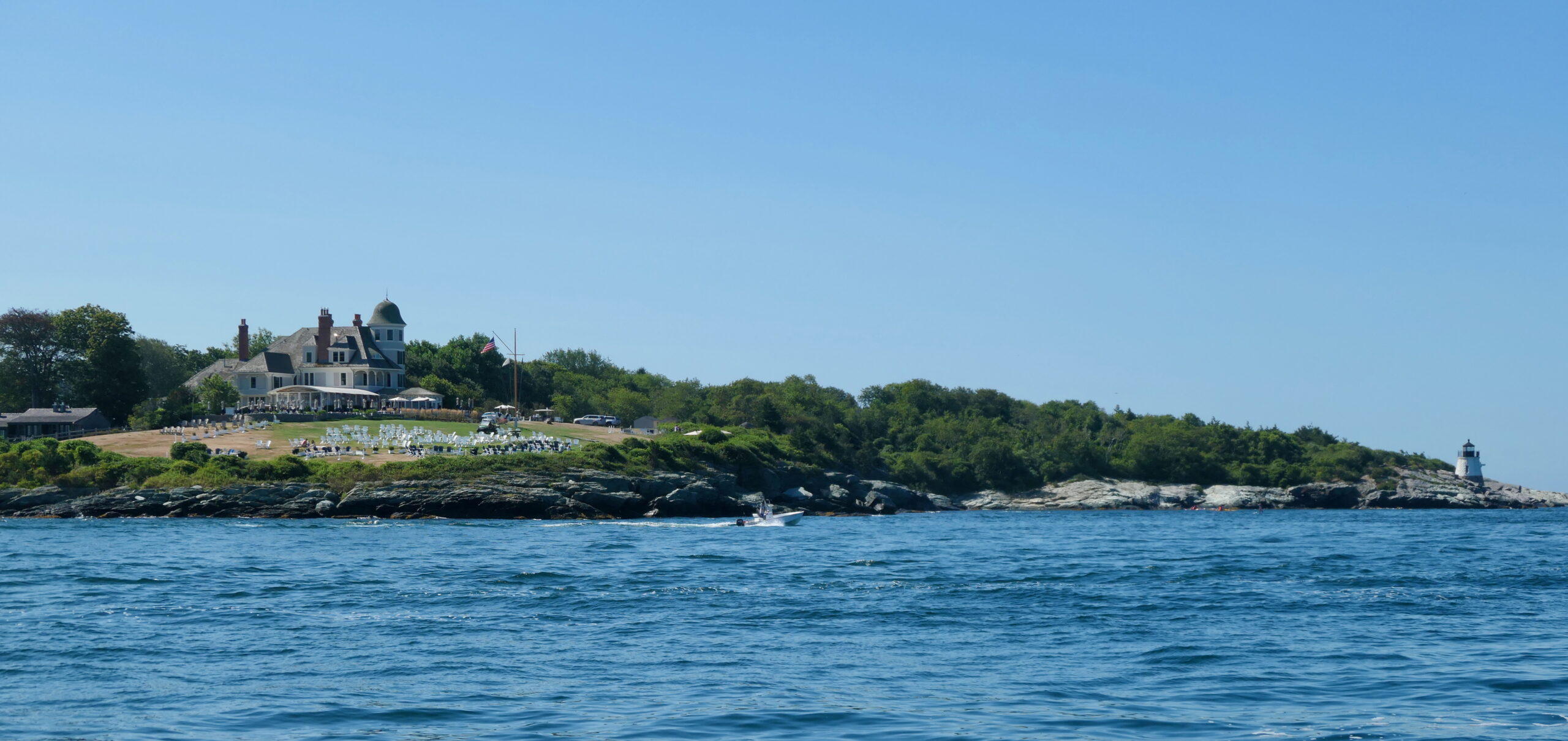
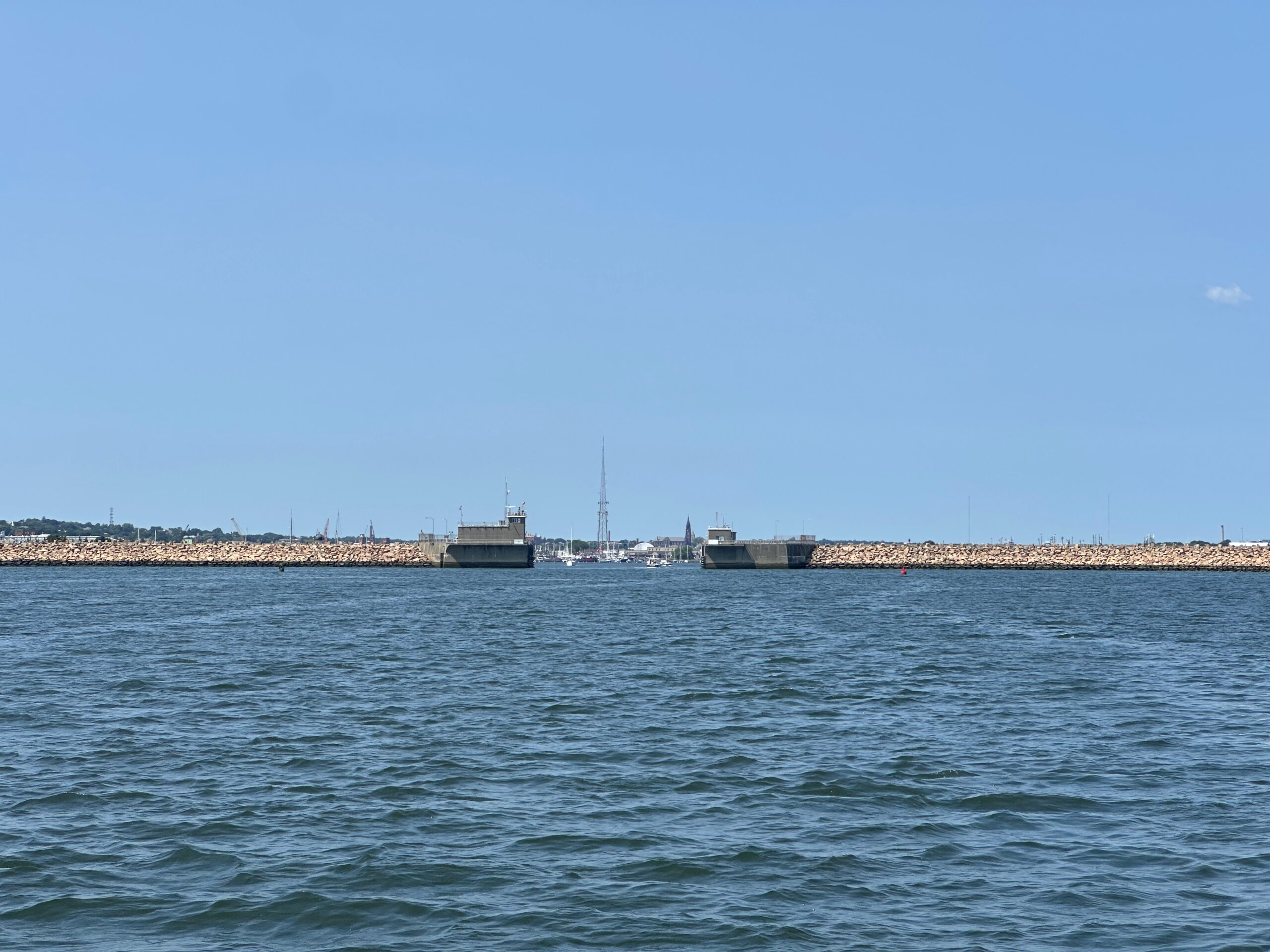
In August 1954 Hurricane Carol slammed Southern New England head-on. Carol is considered to be one of the worst tropical cyclones to strike the region. The largest storm surge, over 14 feet, occurred within Narragansett Bay and New Bedford Harbor.
After suffering through devastating hurricanes in 1938, 1944 (Great Atlantic Hurricane), and 1954 (Carol) the U.S. Army Corps of Engineers erected the New Bedford Hurricane Barrier to protect the busy port and fishing fleet. Construction of the barrier took from October 1962 until January 1966. It is the largest hurricane barrier on the East Coast and an architectural wonder in 1966 when completed.
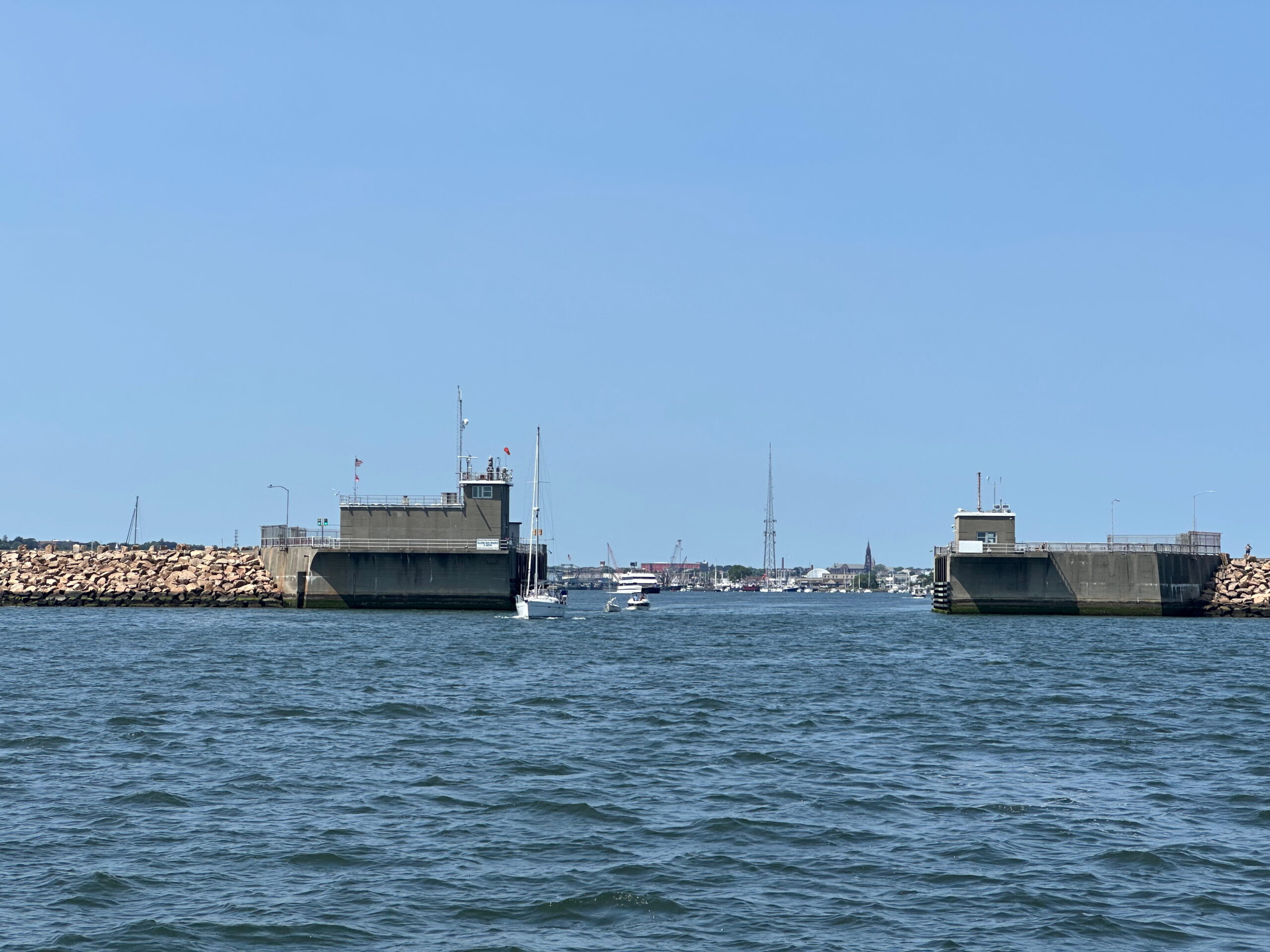
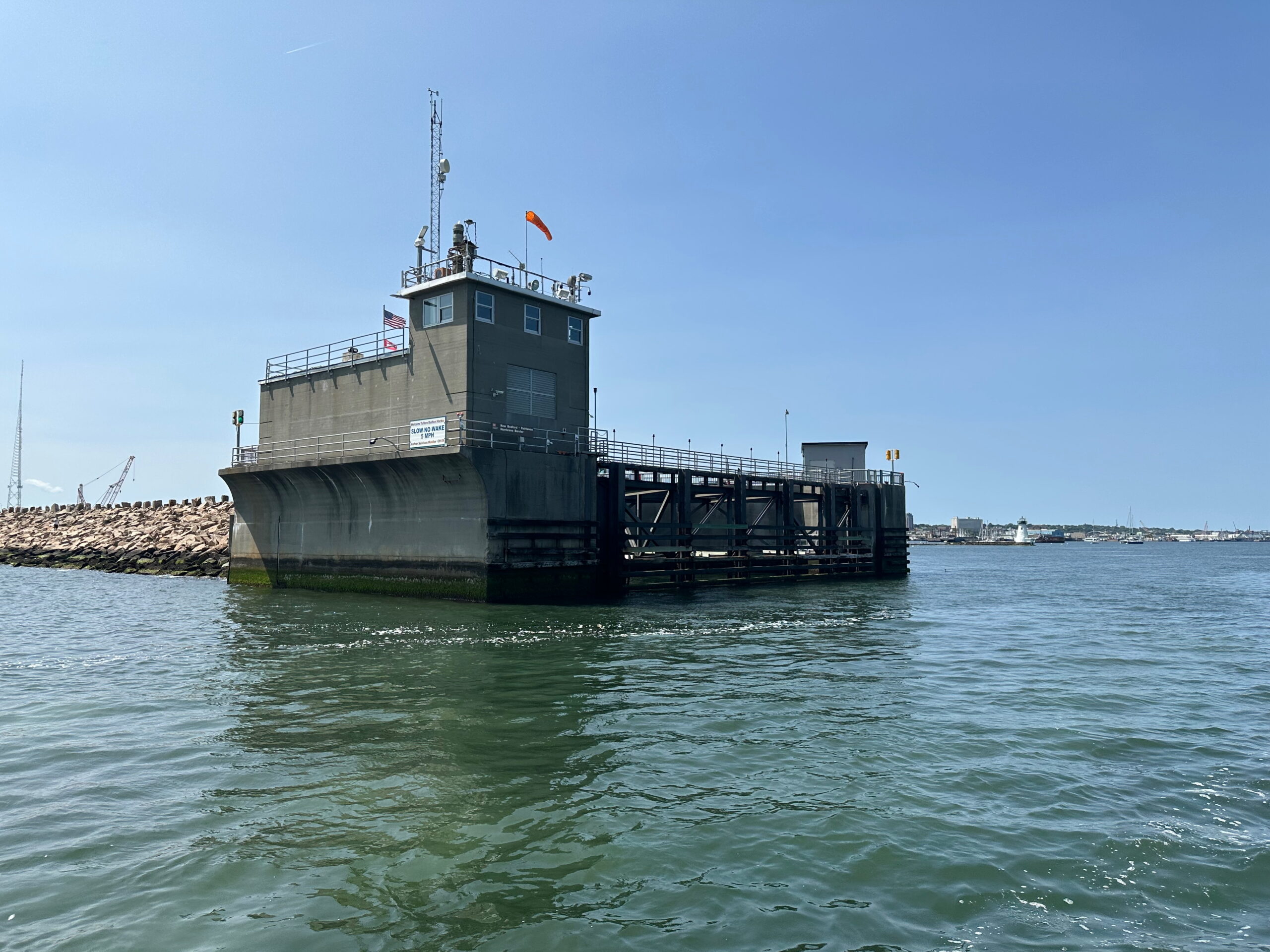

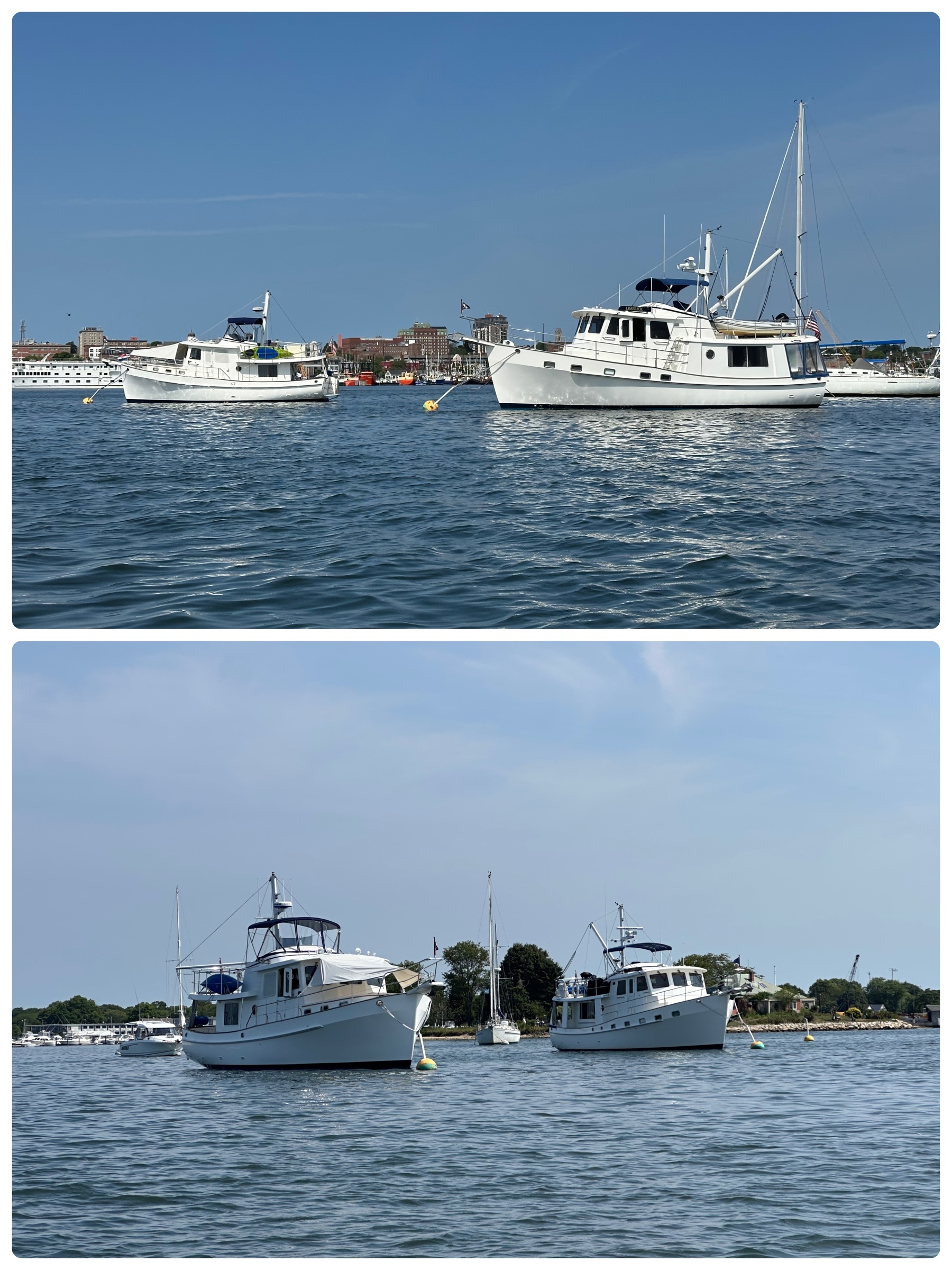
New Bedford is home to the most valuable commercial fishing port in the United States, with its fleets primarily focused on sea scallops, Atlantic cod and haddock. In recent years the locally owned fishing fleets have been taken over by foreign capital investments and companies. Jack Spillane’s 2022 column was an interesting read on this.
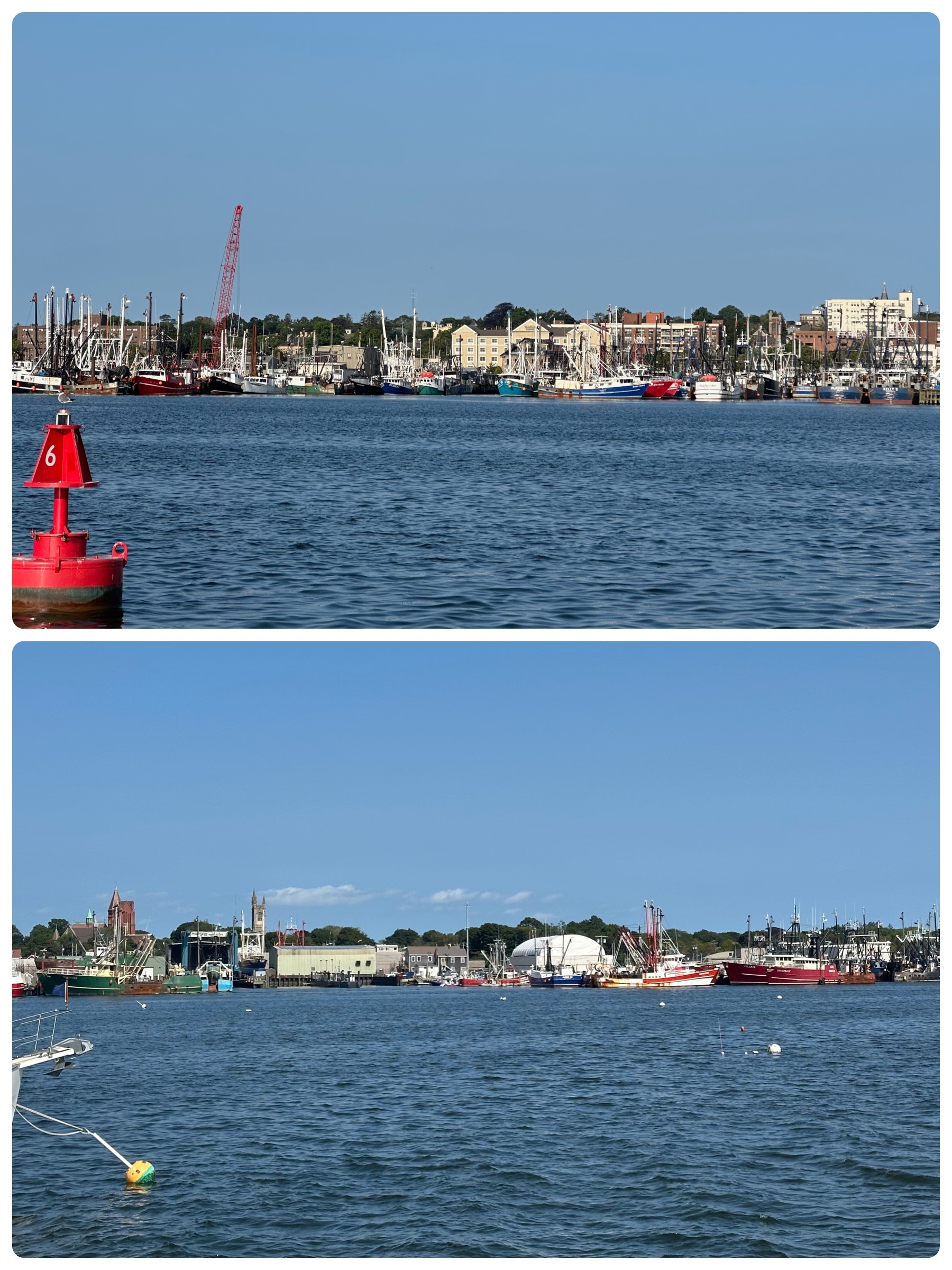
We have never so many commercial fishing boats in one harbor.
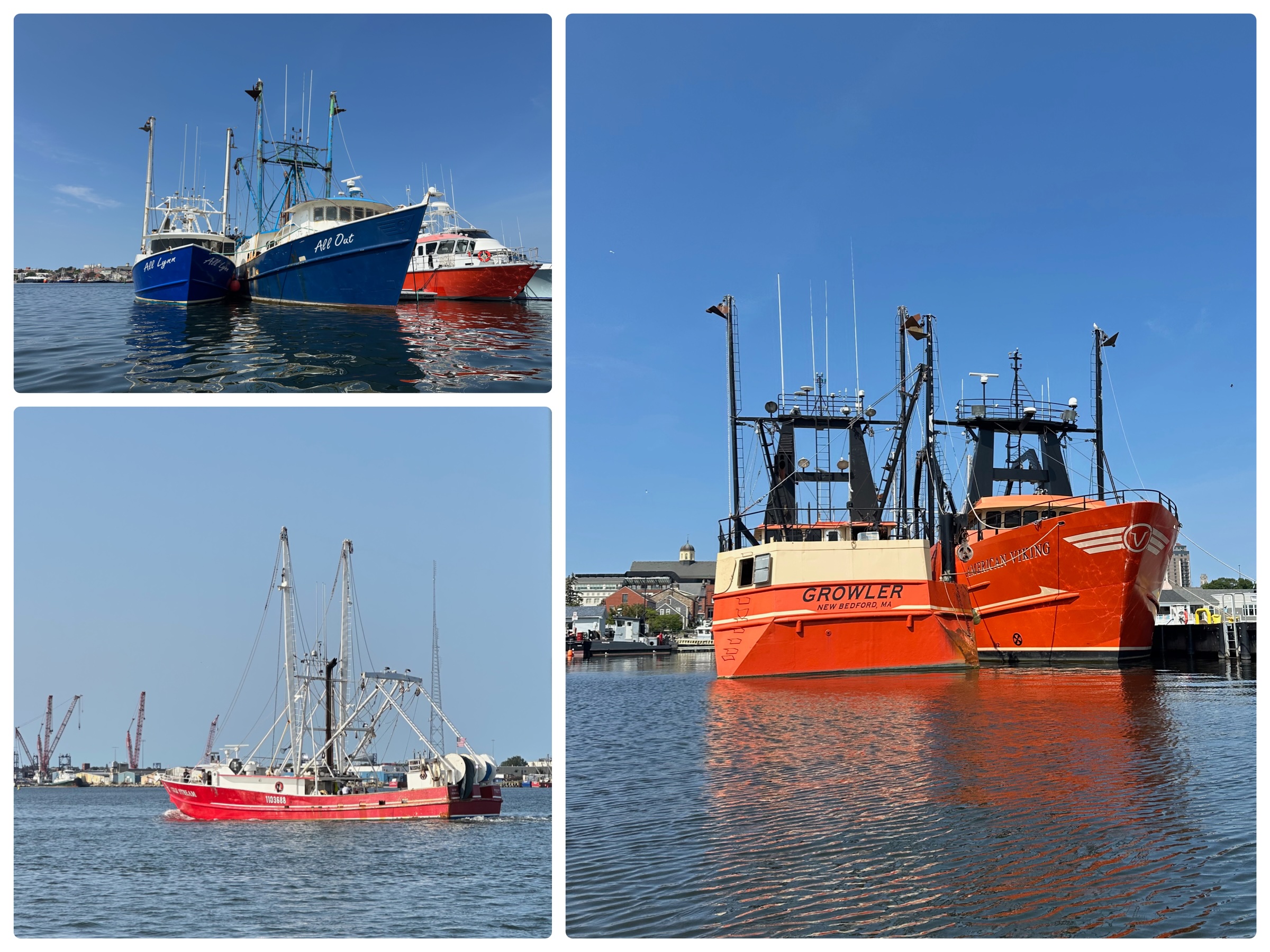
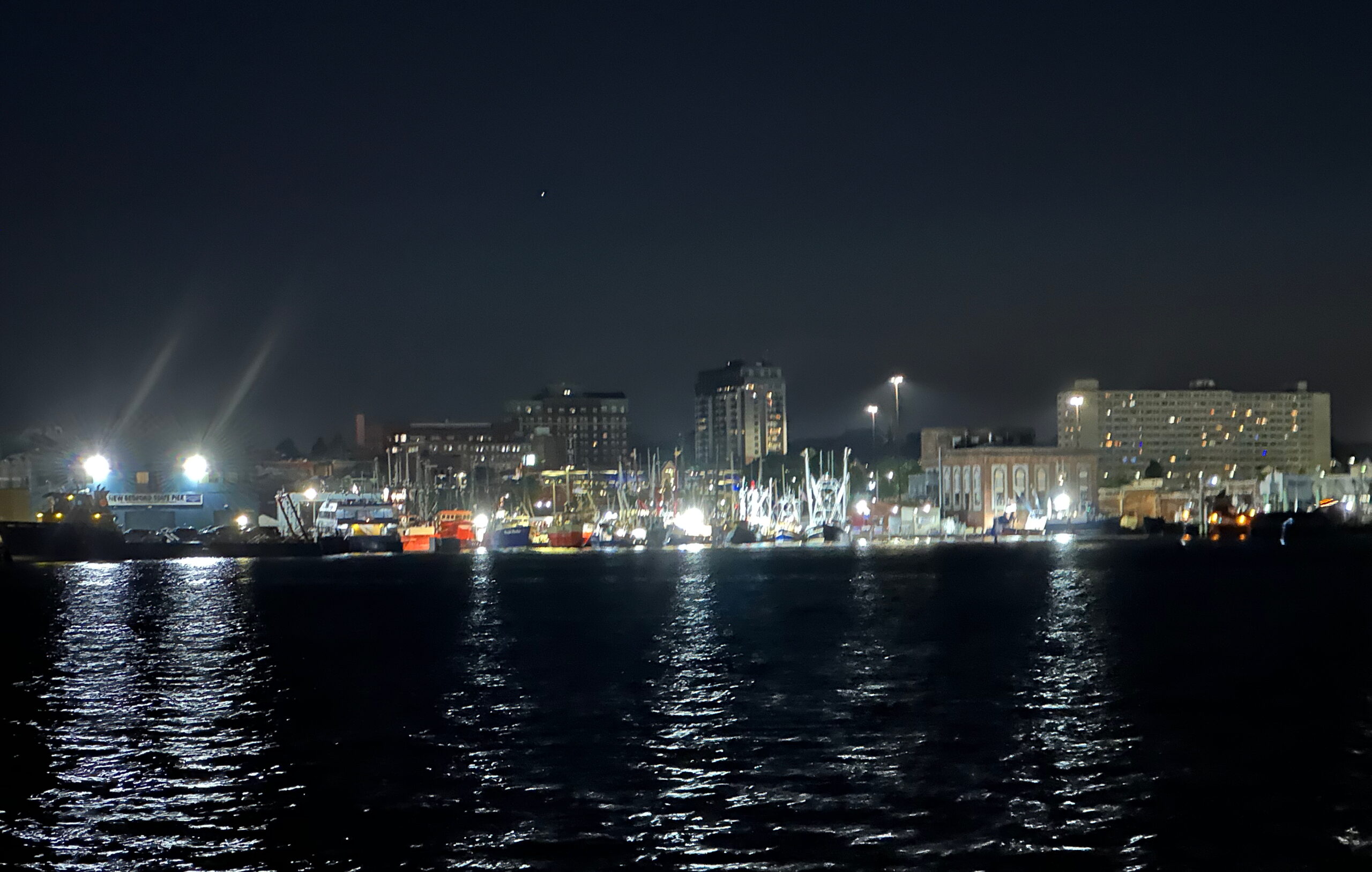
The big attraction for us in New Bedford was the Whaling Museum. Whaling, the fishing industry that predated all of these modern fishing fleets. It is a very impressive museum.
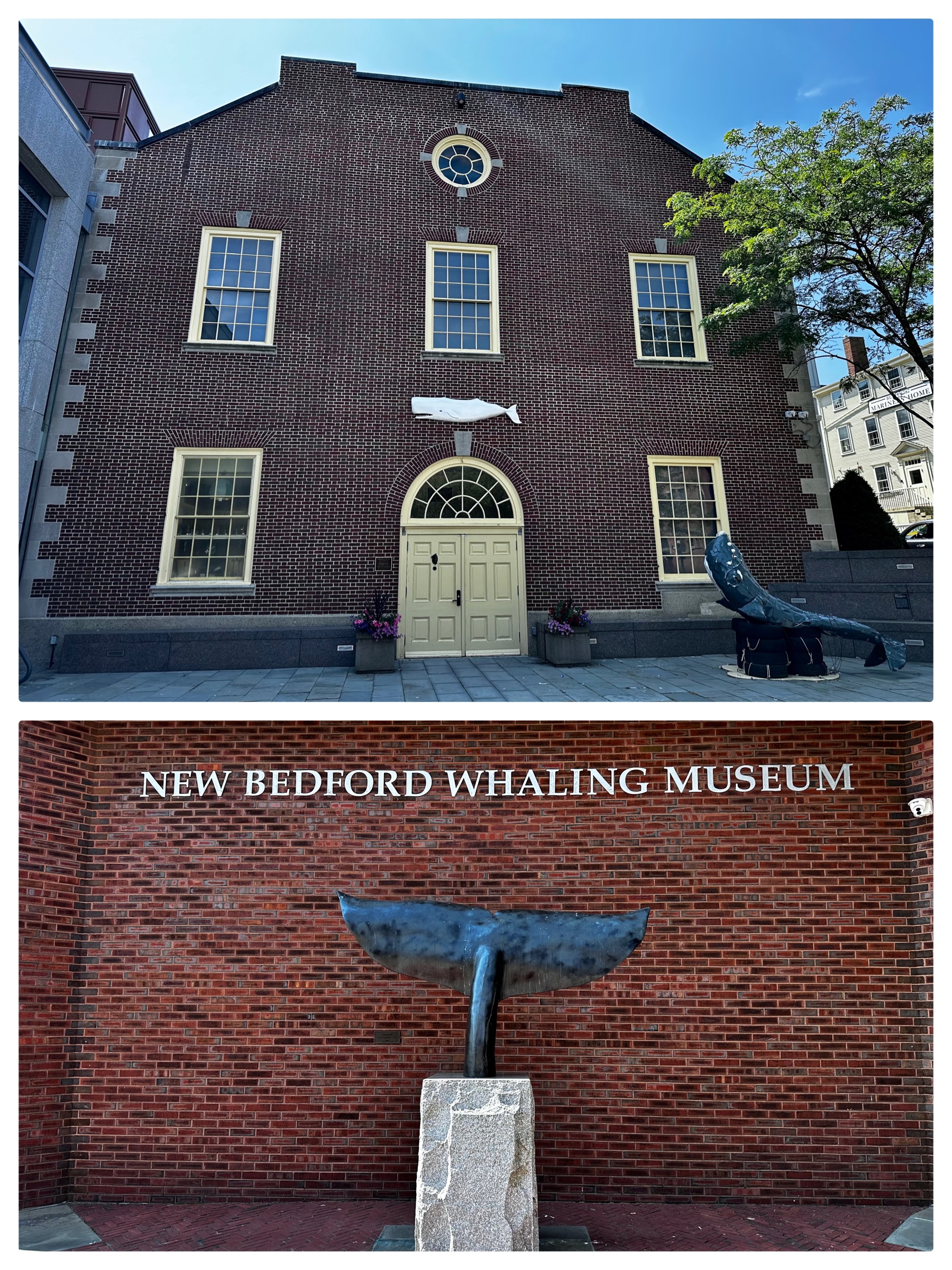
“Skeletons of the Deep” is an ongoing exhibit. The museum is home to four large whale skeletons, and one very special small skeleton. “The skeletons that are on display came from animals that either died accidentally, or by undetermined circumstances. Although New Bedford is famous for its hunting of whales for nearly two centuries, we at the Museum did not hunt the animals on display.”
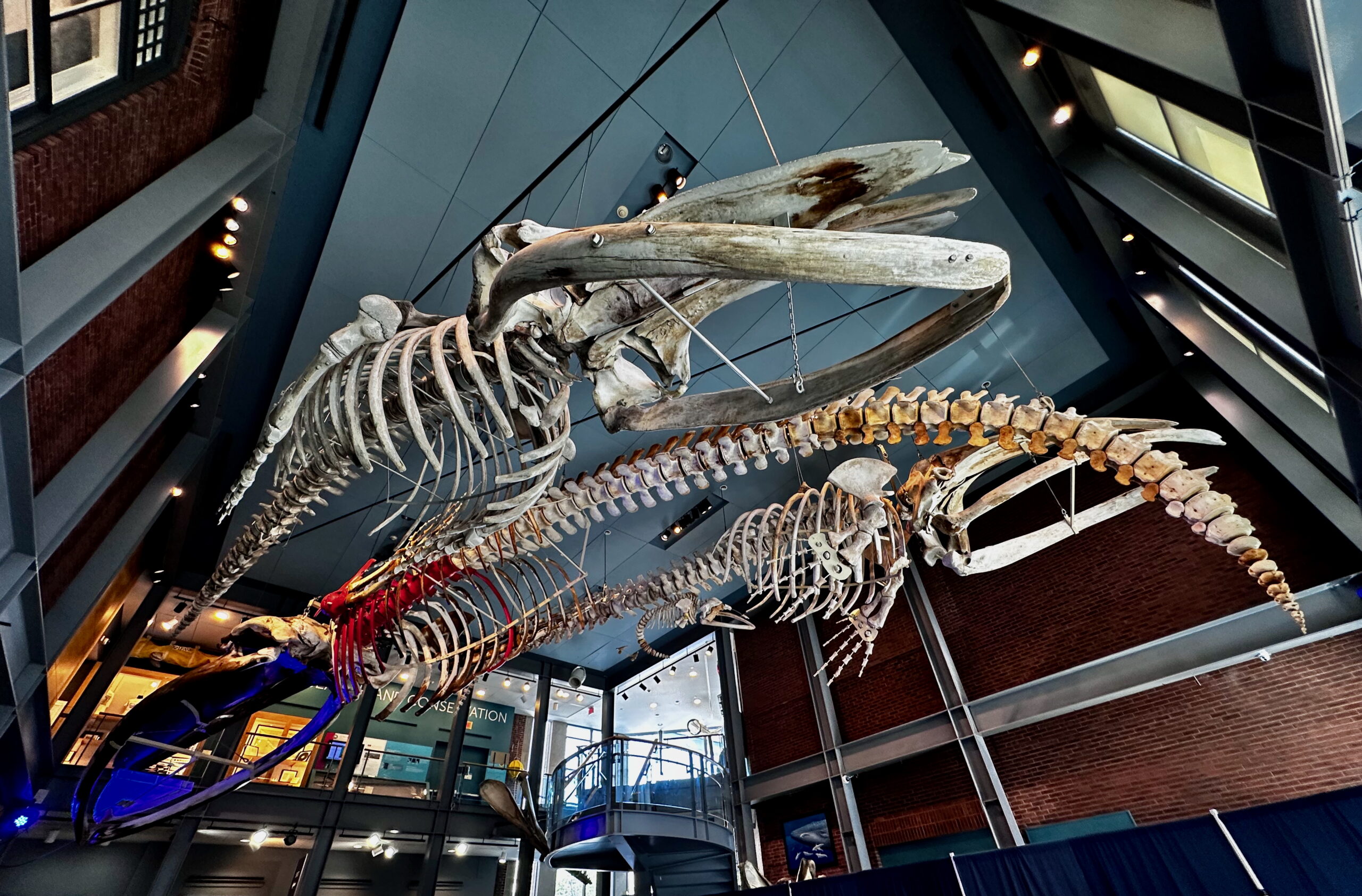
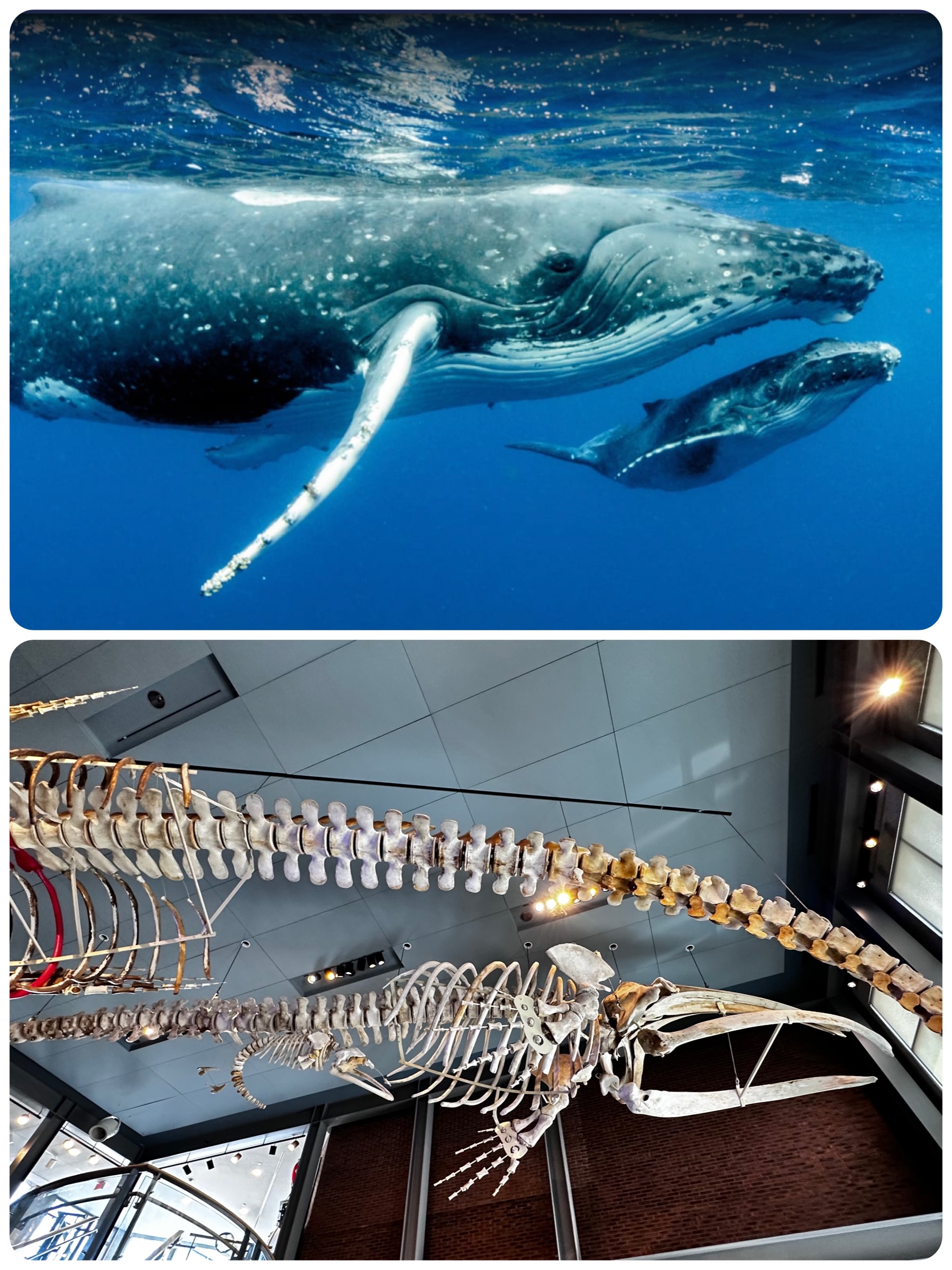
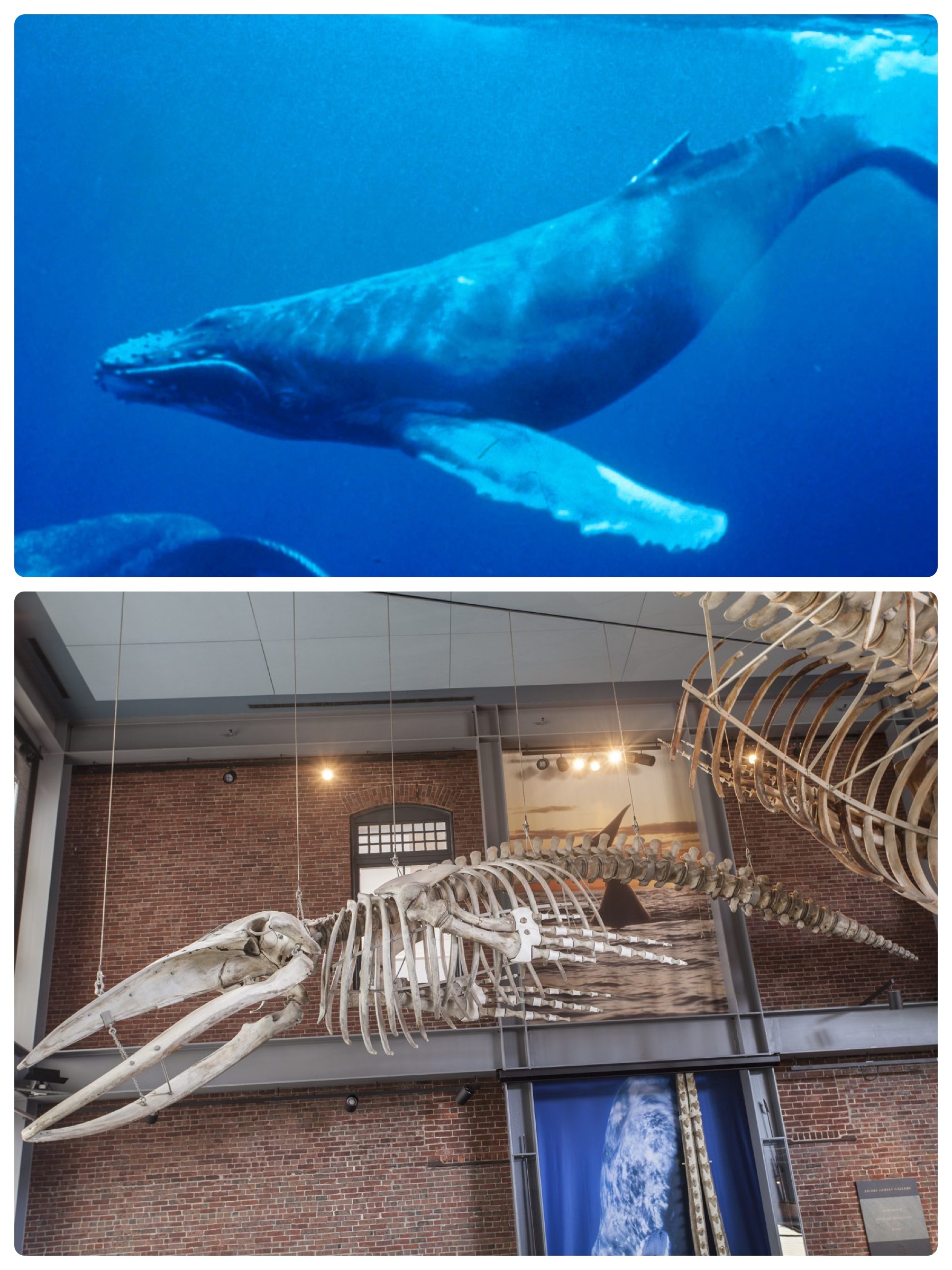
The most fascinating of the whale skeletons was KOBO, King Of the Blue Ocean. Kobo is one of only 39 blue whale skeletons on display in the world. Blue whales are rare in the northern Atlantic waters. Kobo is 66 feet long, and estimated to have been about 80,000 pounds, 5-6 years of age.
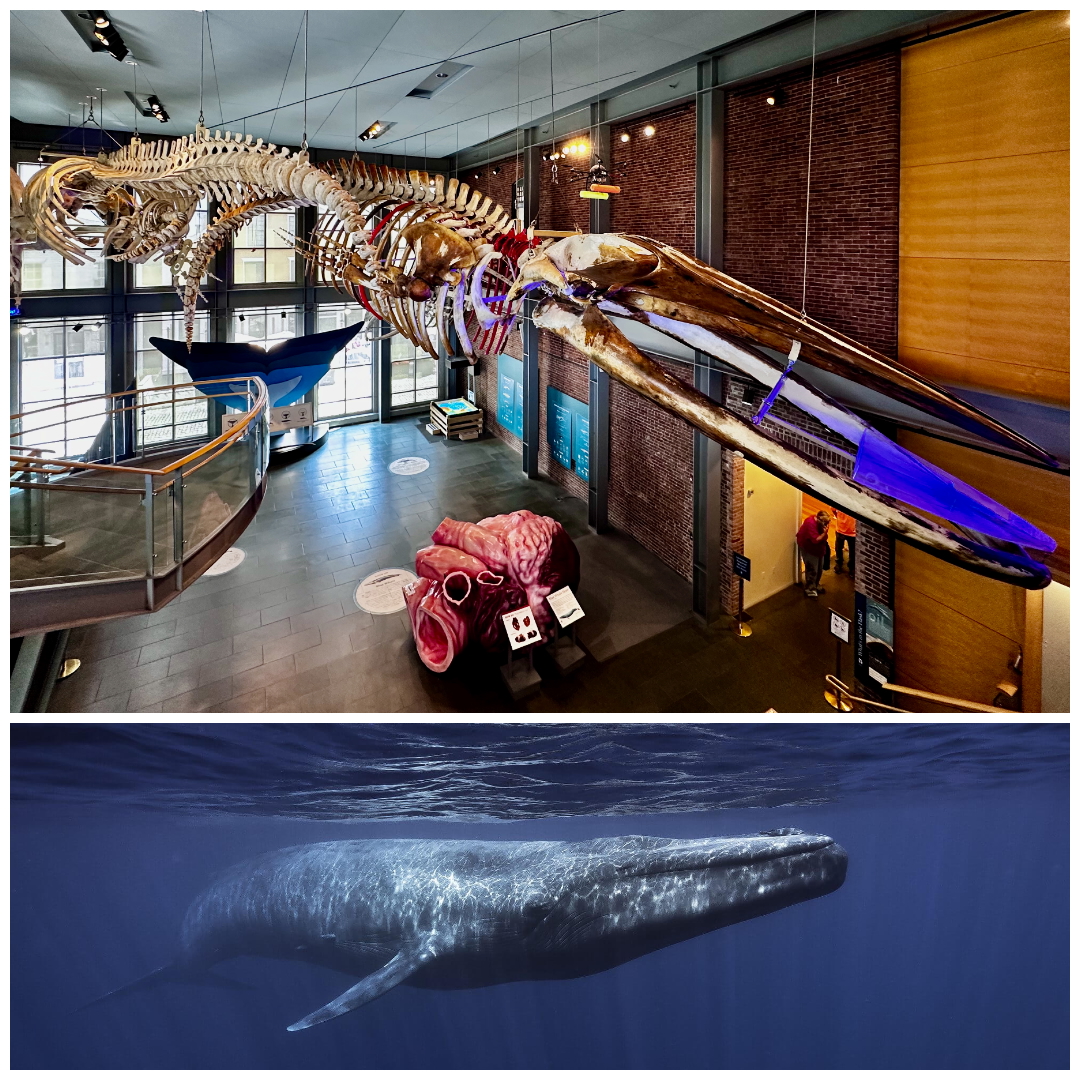
Smaller whale skeletons are composted in elephant manure “to draw the oil out of the bones.” KOBO was too big to compost at the zoo so the bones were placed in 22 cages and submerged in the New Bedford Harbor for five months. That procedure did not draw all of the oil from the bones, so KOBO “drips a bit.”
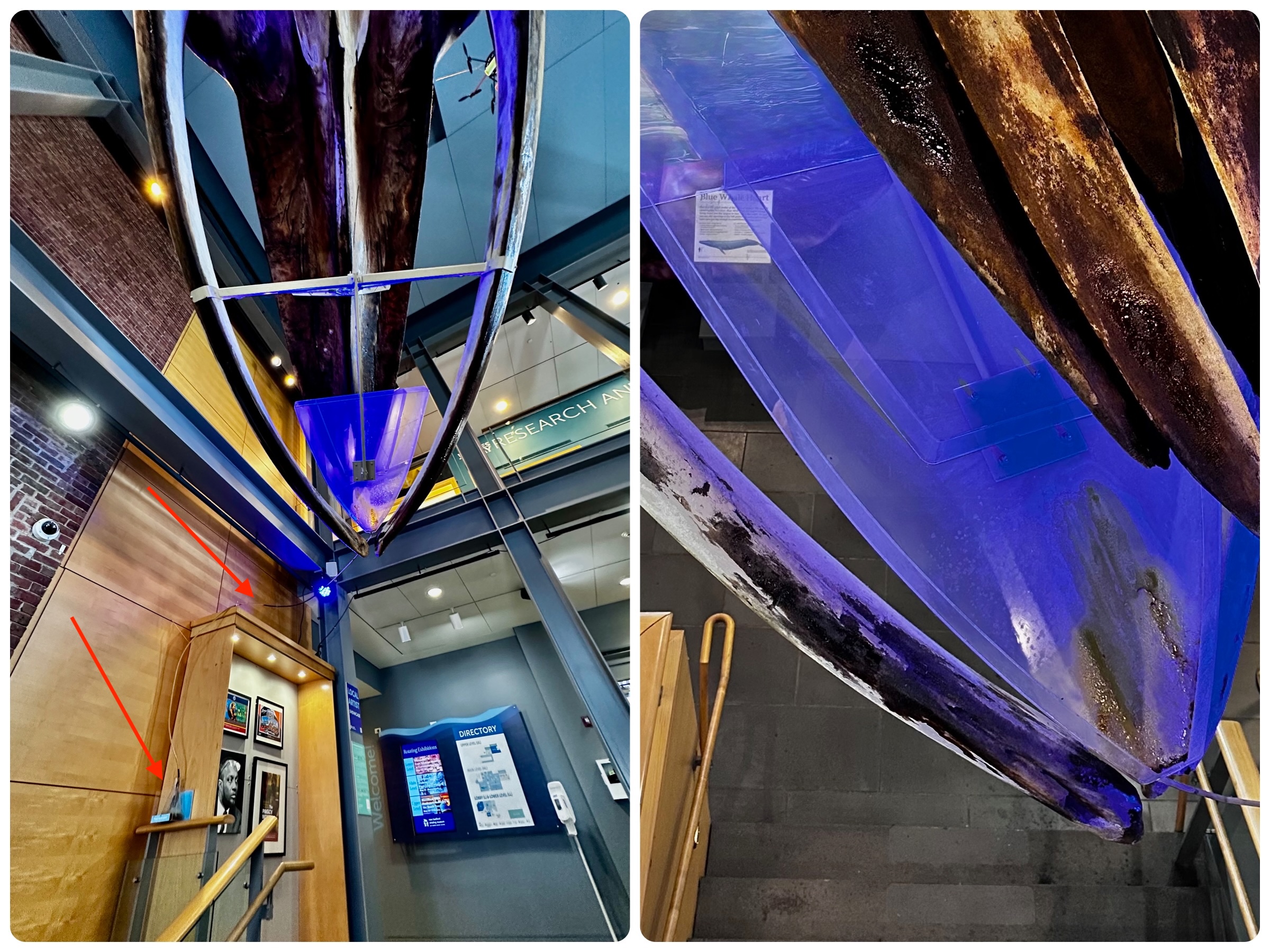
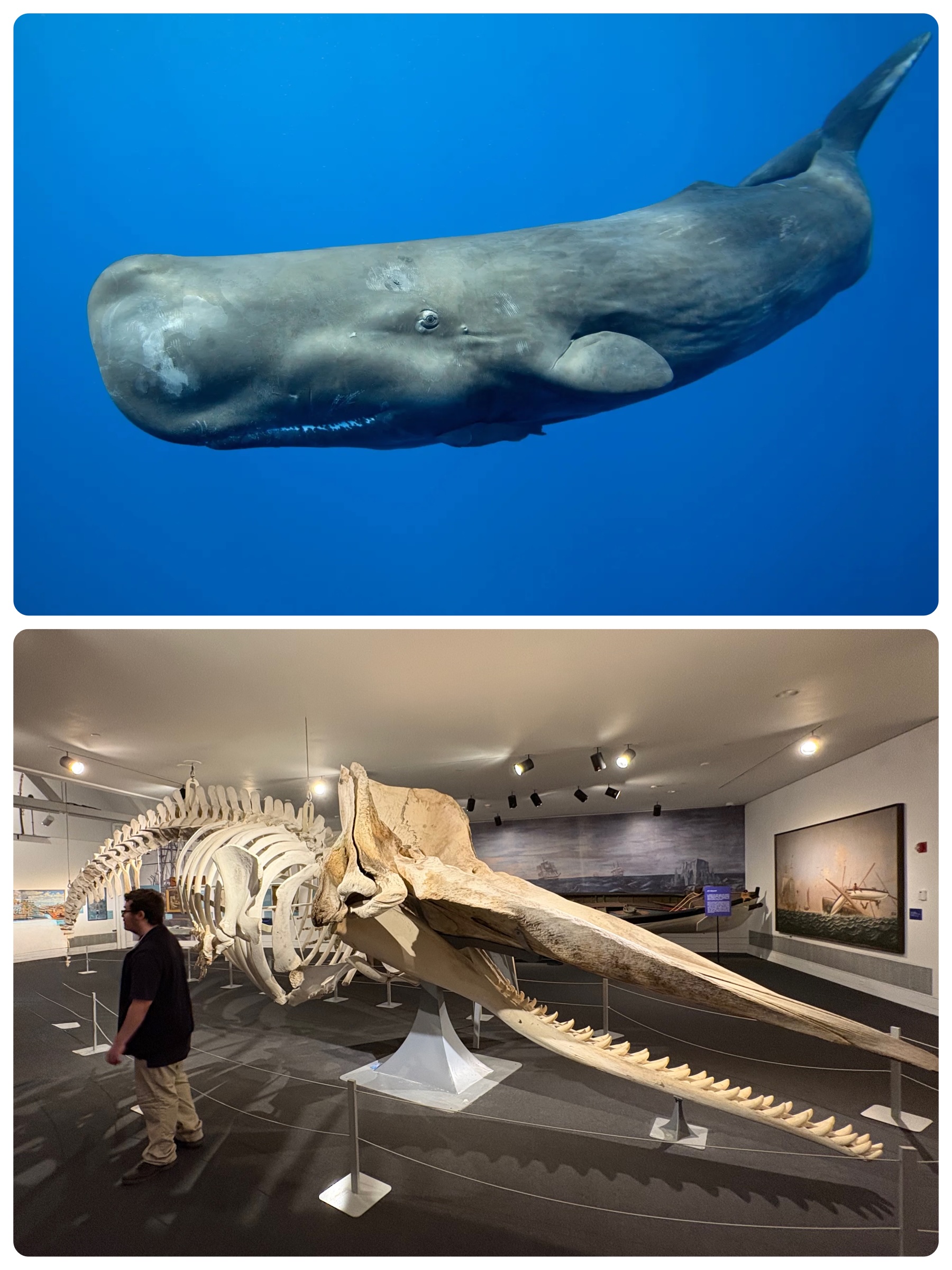
The sperm whale is especially interesting because they have teeth, unlike other whales, and because the skeleton does not show how large the head really is. The head (upper photo) is filled with the precious sperm oil that whalers sought.
Why wasn’t this sperm whale named like Reyna, Quasimodo, and KOBO????

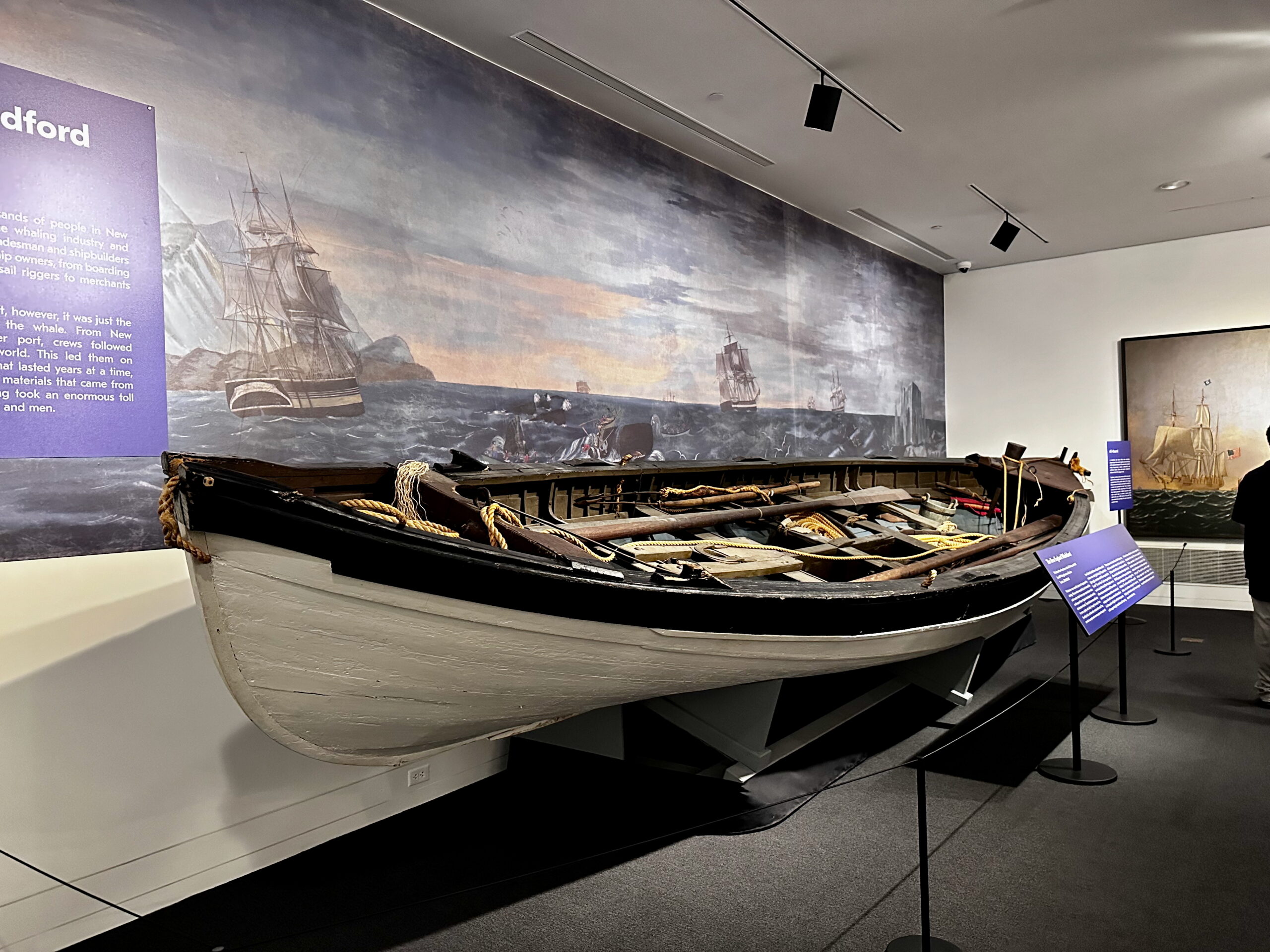
There were more exhibits in the museum than we could possibly see in a few hours. All of it is extremely well-done and fascinating. We are glad we joined a tour group for our visit. I tend to wander aimlessly unless directed. 😉 Cody, our guide, was a walking encyclopedia of information about the history of whaling. He told us that when he was visiting the museum in 3rd grade he hid in the bathroom so that he did not have to leave with his school group. You can imagine the uproar that caused. How clever of him to find work at the museum 20 years later so he never has to leave, legitimately.
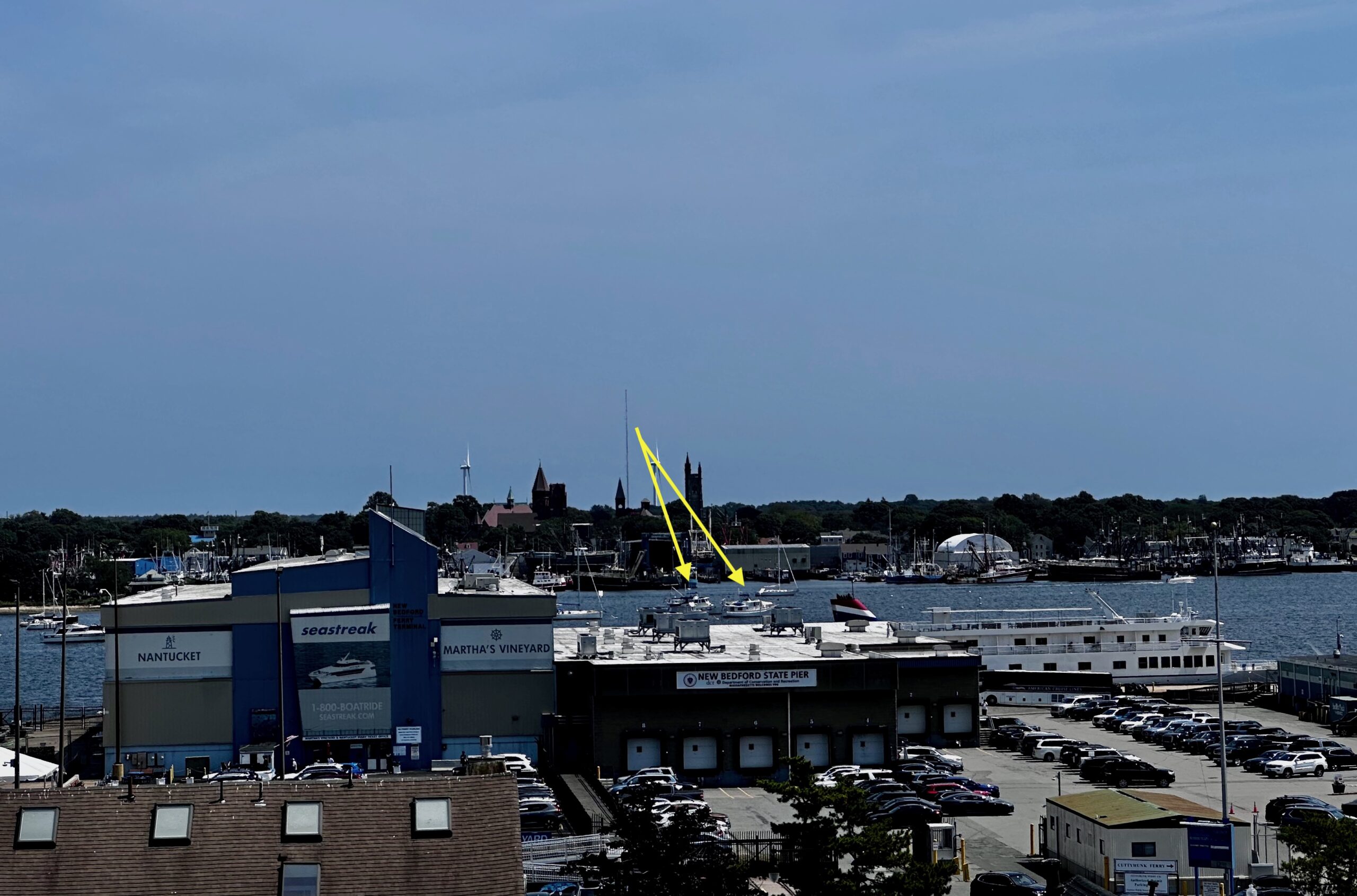
Fun Fact: The New Bedford Whaling Museum hosts a Moby Dick Marathon each year, “25-hour read-a-thon from Saturday to Sunday, interspersed with exciting Melville-inspired activities.” But even more interesting is that Mystic Seaport also hosts a Moby Dick Marathon in July. I have never read Moby Dick, but I am not sure I would be inspired to read it in a marathon.
Who has the best clam chowder in New Bedford? We decided to test the #1 and #2 restaurants.
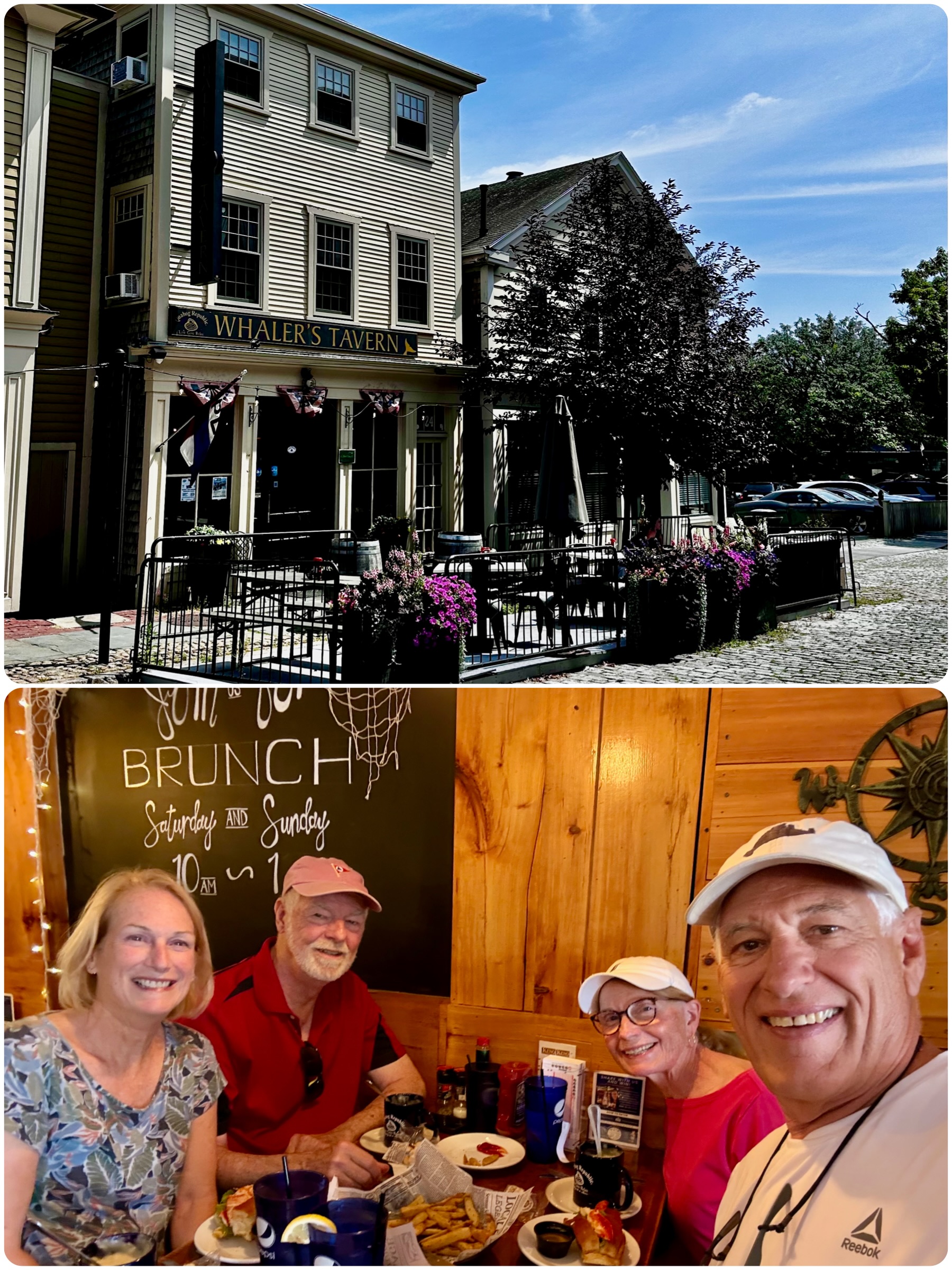
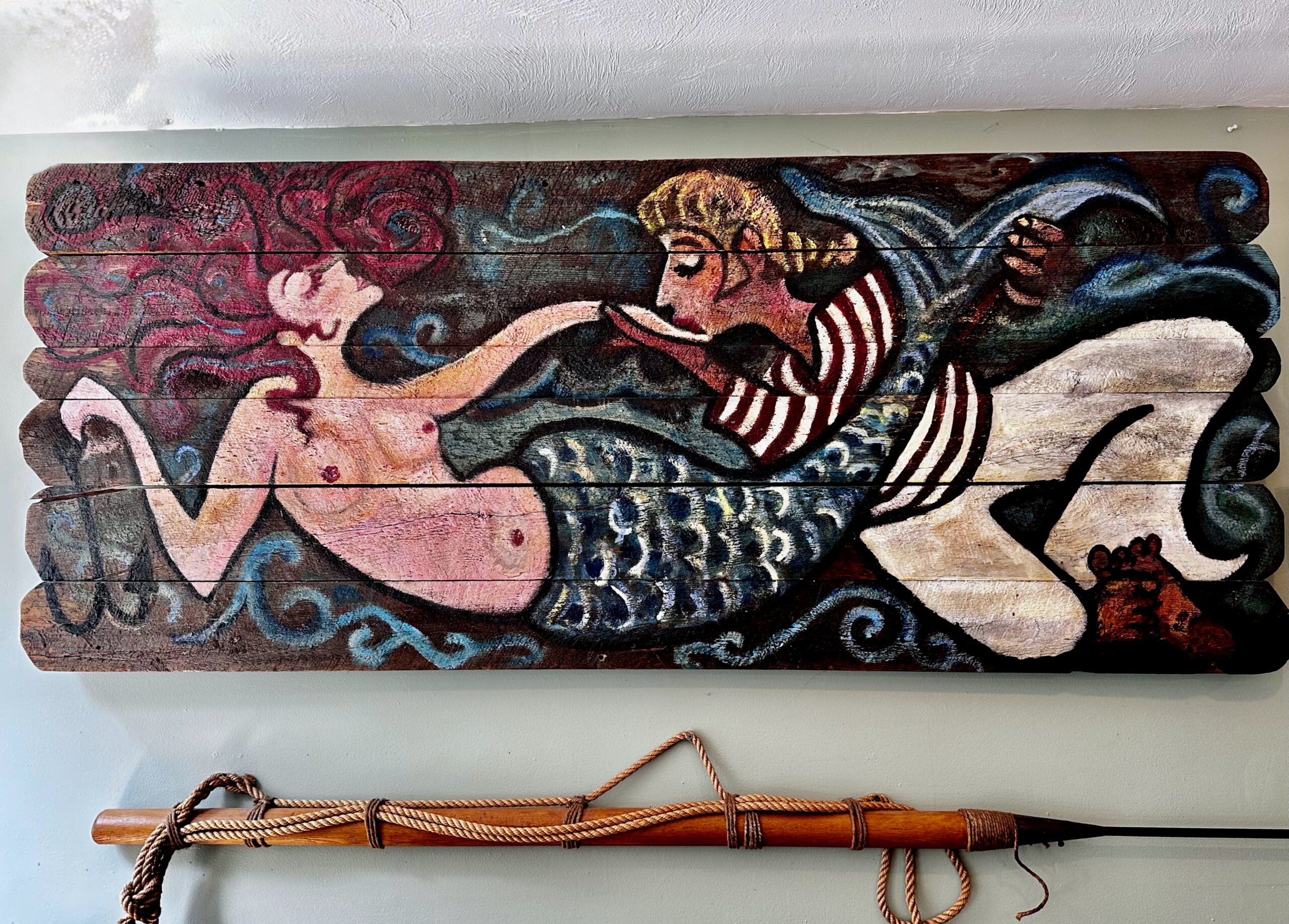
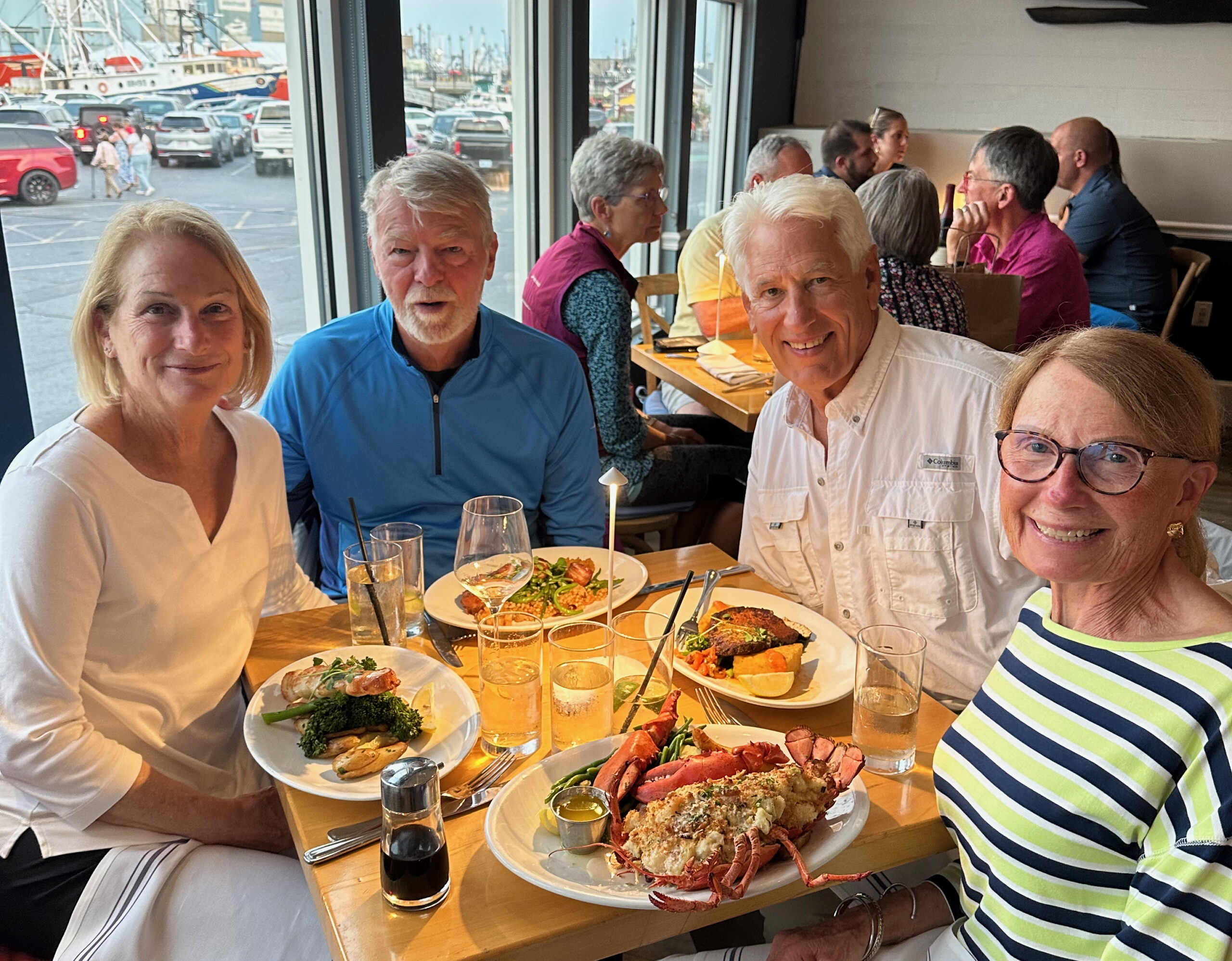
The dinners were excellent, and their clam chowder definitely deserved a first place.
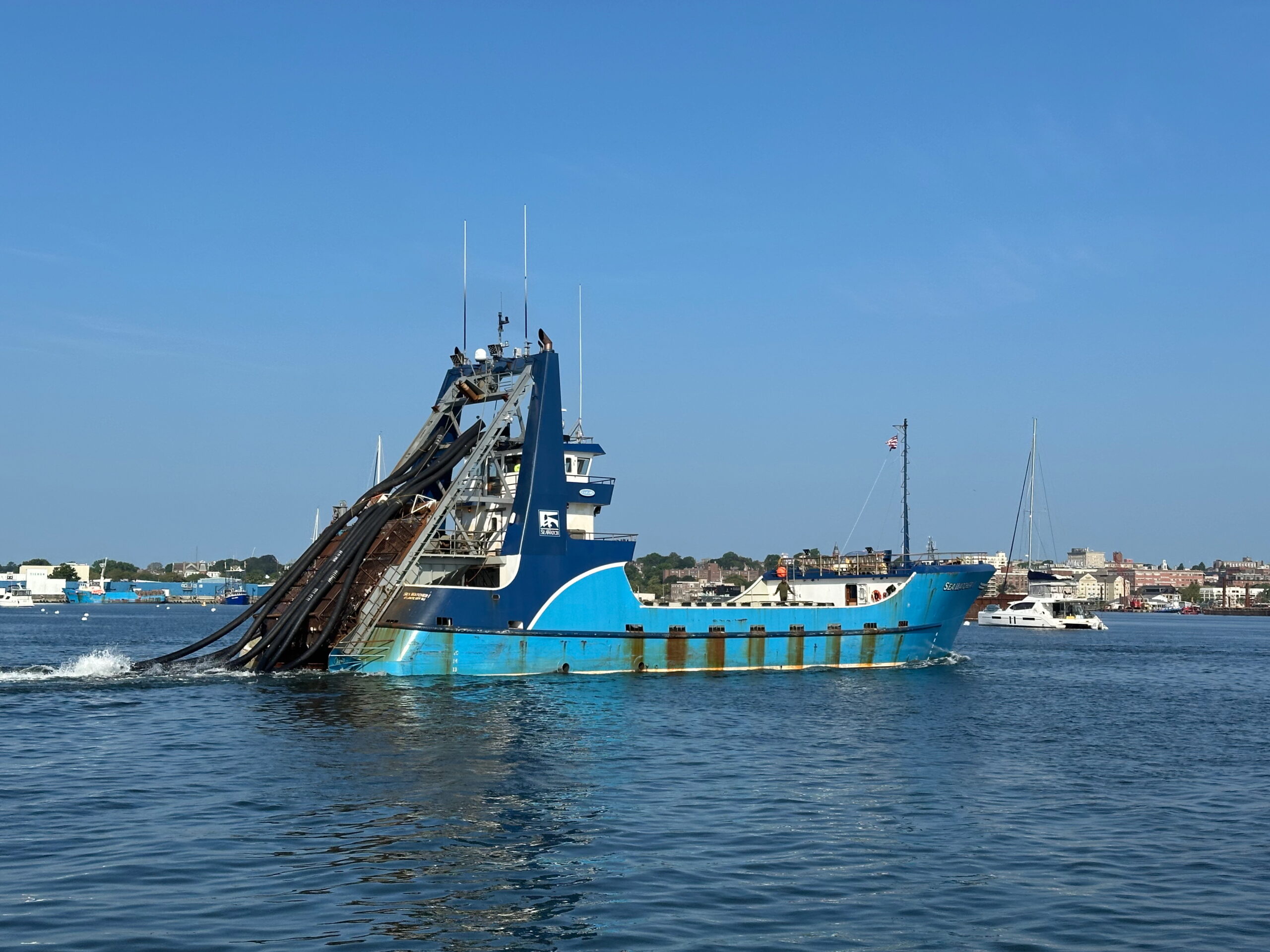
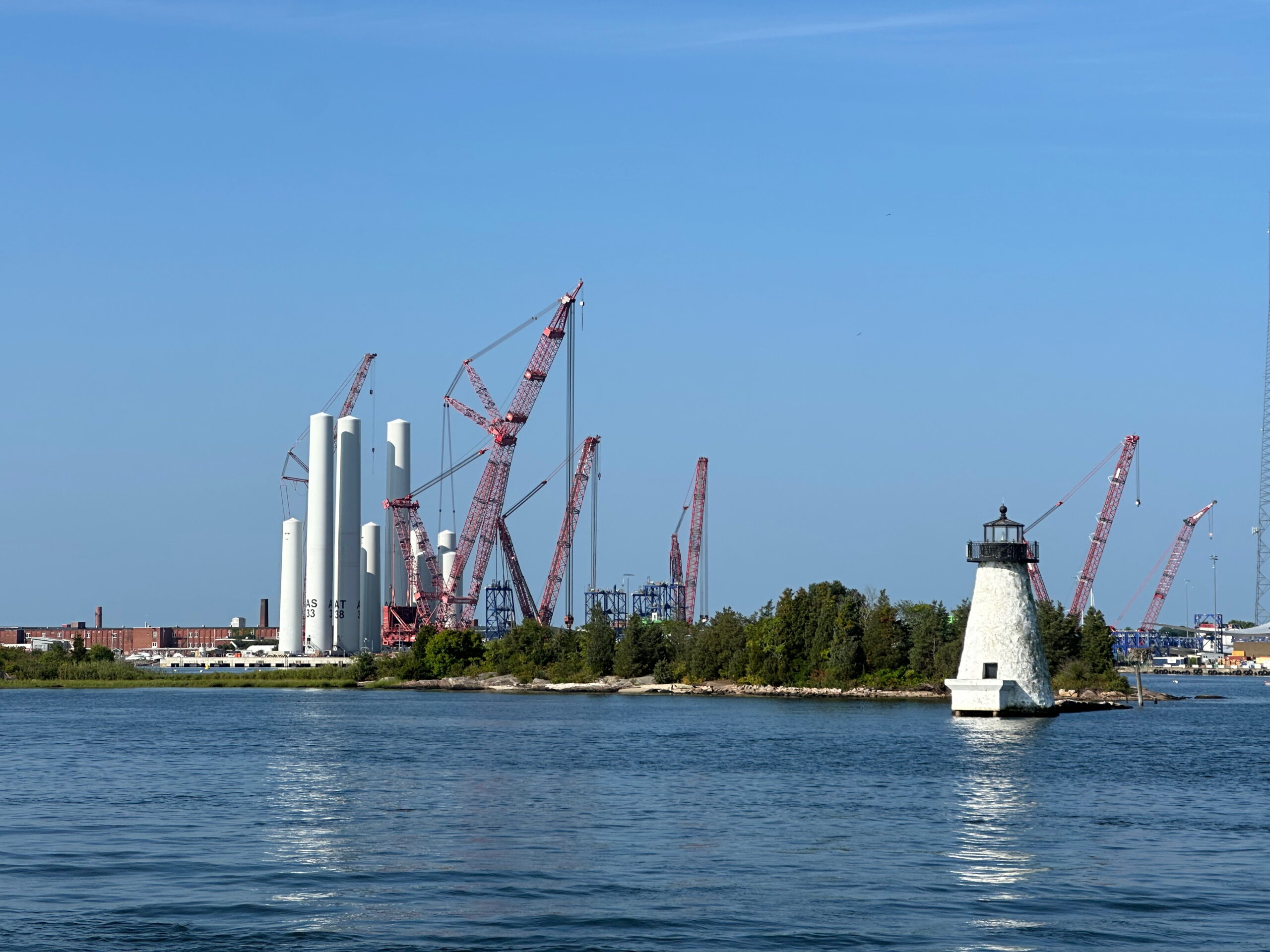
In the background is Marine Commerce Terminal, a 29-acre facility built specifically for the construction, assembly, and deployment of offshore wind turbines, like our homeport area of New London/Groton.
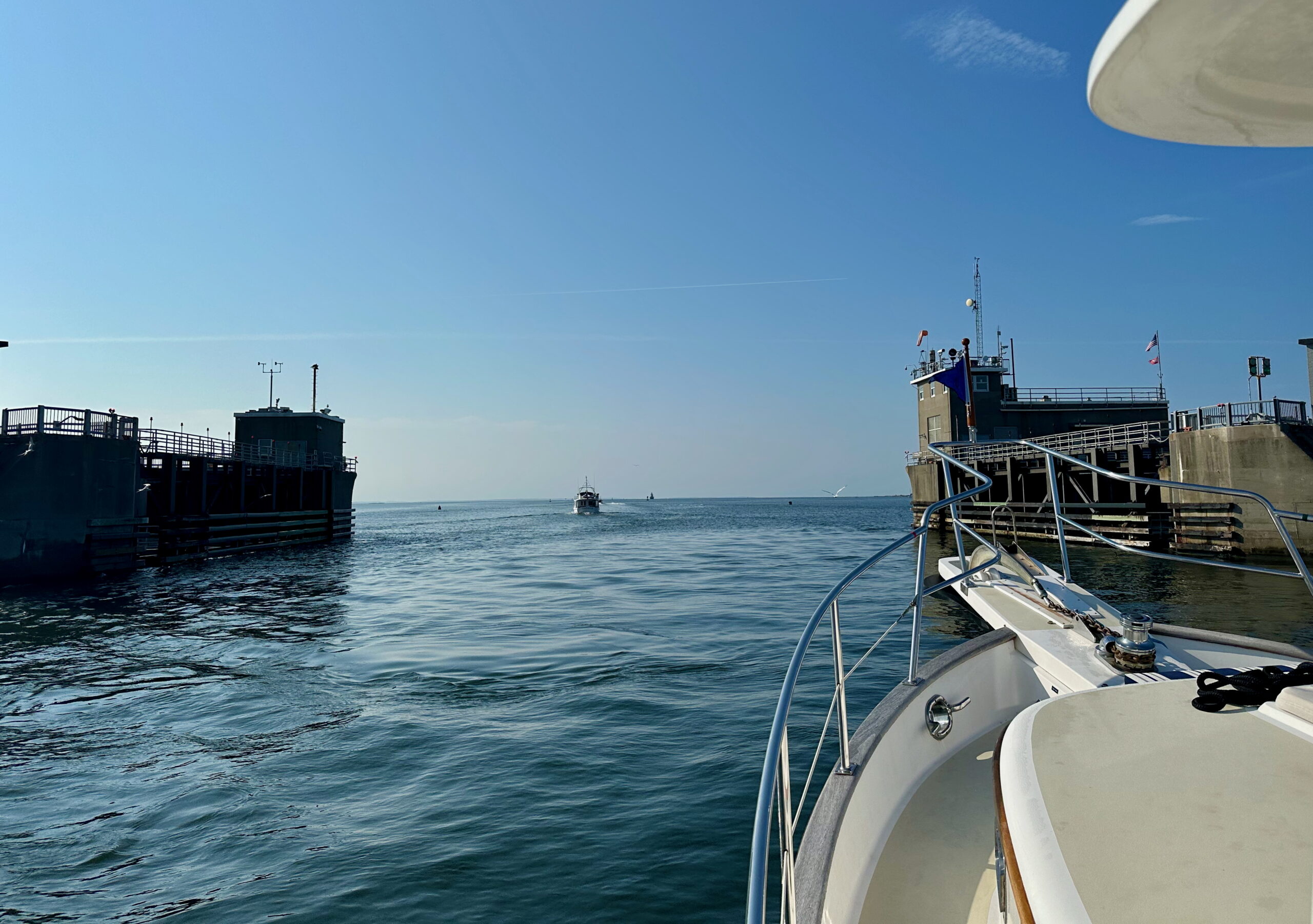
New Bedford was an interesting mix of an active commercial port and an important historical port. It would be interesting to return and spend time focusing on all things whale-related. I’ll bet you could spend a couple of days focusing on only that theme.
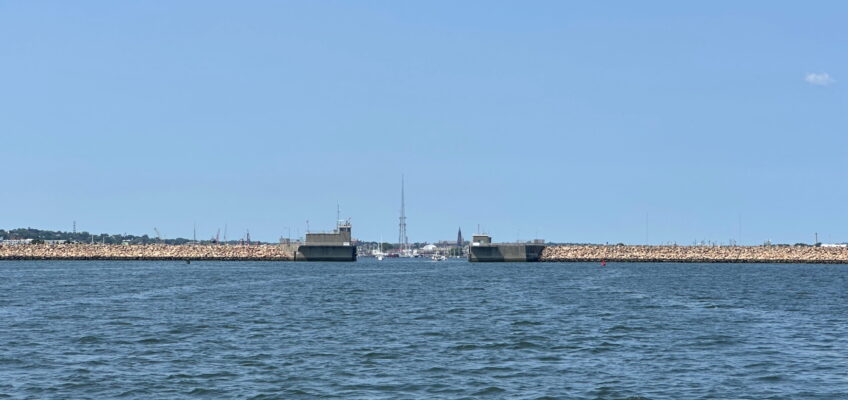
Susie Marshall
We enjoyed our visit there too. The best scallops we’ve ever had. Even went to a market on our bikes to bring back fresh one. I sure miss cruising in that area.
Rob Lentz
I’ve passed New Bedford often. I’ve always been curious. Maybe next year.
watsons
It is worth the visit.
Prue Preston
When we visited a few years ago, we were surprised at how many fishing boats looked in poor repair. Apparently each boat is issued a permit for so much catch per year. The number is small enough that it isn’t fiscally feasible to run the large vessels. Therefore they keep a portion of the fleet permanently docked and use their permits to increase the size of the catch for those ships that are still maintained. The economics of fishing is a challenge
Ellen/Harry R Seltzer
I always learn something from your blogs…thanks! this was very interesting and I really wanted a bite of that lobster!